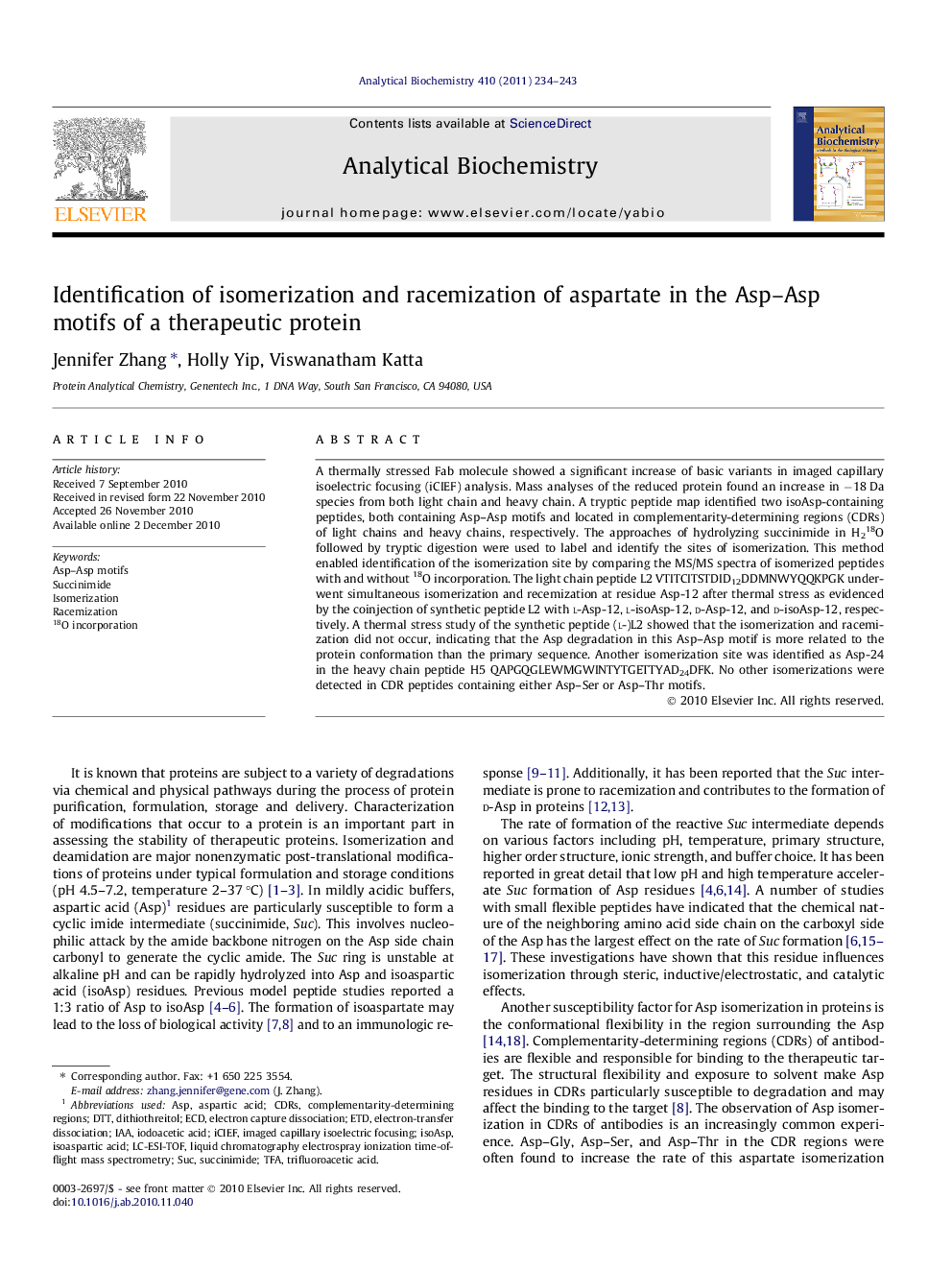| Article ID | Journal | Published Year | Pages | File Type |
|---|---|---|---|---|
| 7559754 | Analytical Biochemistry | 2011 | 10 Pages |
Abstract
A thermally stressed Fab molecule showed a significant increase of basic variants in imaged capillary isoelectric focusing (iCIEF) analysis. Mass analyses of the reduced protein found an increase in â18Â Da species from both light chain and heavy chain. A tryptic peptide map identified two isoAsp-containing peptides, both containing Asp-Asp motifs and located in complementarity-determining regions (CDRs) of light chains and heavy chains, respectively. The approaches of hydrolyzing succinimide in H218O followed by tryptic digestion were used to label and identify the sites of isomerization. This method enabled identification of the isomerization site by comparing the MS/MS spectra of isomerized peptides with and without 18O incorporation. The light chain peptide L2 VTITCITSTDID12DDMNWYQQKPGK underwent simultaneous isomerization and recemization at residue Asp-12 after thermal stress as evidenced by the coinjection of synthetic peptide L2 with l-Asp-12, l-isoAsp-12, d-Asp-12, and d-isoAsp-12, respectively. A thermal stress study of the synthetic peptide (l-)L2 showed that the isomerization and racemization did not occur, indicating that the Asp degradation in this Asp-Asp motif is more related to the protein conformation than the primary sequence. Another isomerization site was identified as Asp-24 in the heavy chain peptide H5 QAPGQGLEWMGWINTYTGETTYAD24DFK. No other isomerizations were detected in CDR peptides containing either Asp-Ser or Asp-Thr motifs.
Related Topics
Physical Sciences and Engineering
Chemistry
Analytical Chemistry
Authors
Jennifer Zhang, Holly Yip, Viswanatham Katta,
